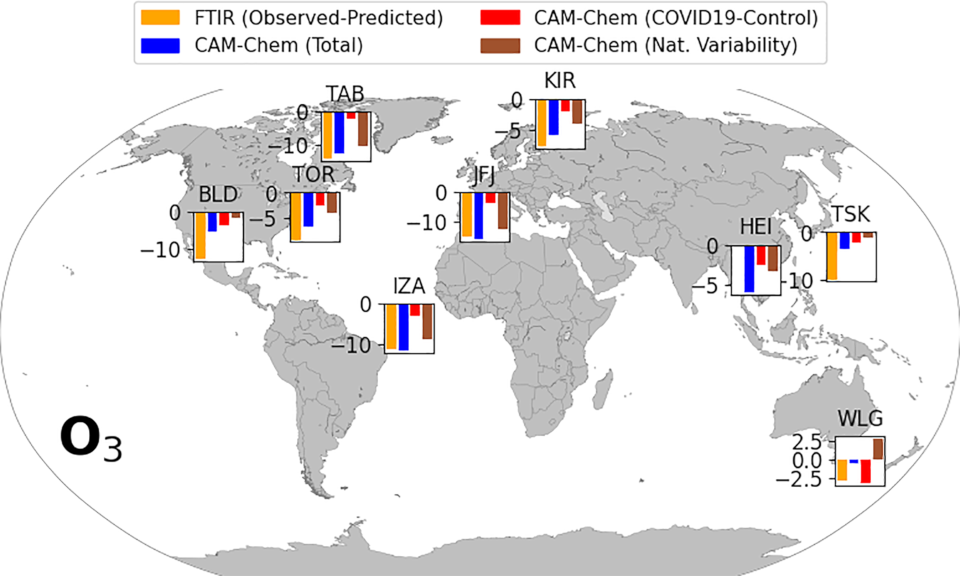Assessing Atmospheric Gas Anomalies During 2020 Lockdowns
Ground-based FTIR Observations and Model Simulations
The COVID-19 pandemic and its associated restrictions provided a unique opportunity to investigate changes in atmospheric composition. Ortega et al. (2023) showed that ground-based solar absorption FTIR observations, most of them within the NDACC/IRWG, effectively captured shifts in atmospheric composition during the stringent lockdown in 2020. They analyzed multiple gases, including ozone, CO, C2H2, H2CO, and C2H6, quantifying changes in their levels using multiple FTIRs in urban and remote locations. To estimate business-as-usual tropospheric columns of these gases for 2020, they used a forecasting method that considered past long-term trends and inter-annual variability. Comparing these predictions to actual observations, they calculated anomalies for each month in 2020. The study also employed the CAM-chem model to disentangle the effects of COVID-19 restrictions and natural variability. The showed a decline of ozone in the troposphere with a global mean of 9.2 % during March - May 2020. The model accurately captured the magnitudes of observed anomalies, particularly for remote Northern Hemisphere sites where natural variability played a substantial role. The analysis extended to CO anomalies using MOPITT satellite observations, which showed reductions in North America and Europe in March 2020 but remained stable in subsequent months due to changes in hydroxyl radical levels. The study highlighted the intricate interplay between natural variability and human activities in shaping atmospheric composition during a global lockdown, offering valuable insights for the FTIR community in understanding rapid atmospheric changes over short periods.
